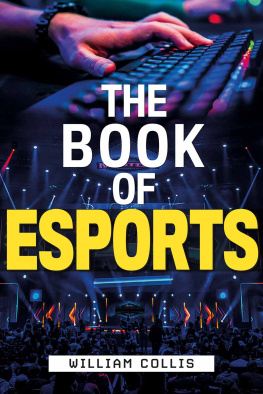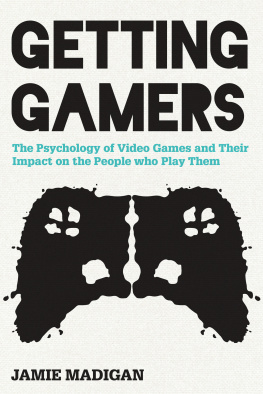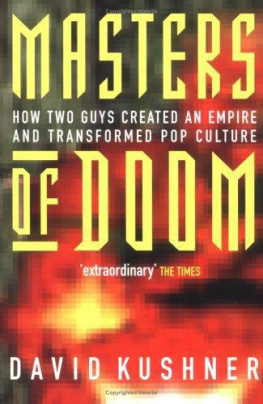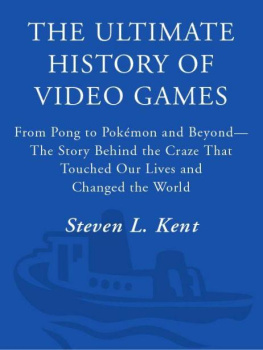SMARTBOMB
THE QUEST FOR ART, ENTERTAINMENT, AND BIG BUCKS IN THE VIDEOGAME REVOLUTION
HEATHER CHAPLIN & AARON RUBY

Algonquin Books of Chapel Hill 2005
Published by
Algonquin Books of Chapel Hill
Post Office Box 2225 Chapel Hill, North Carolina 27215-2225
a division of
Workman Publishing
708 Broadway
New York, New York 10003
2005 by Heather Chaplin and Aaron Ruby.
All rights reserved.
Library of Congress Cataloging-in-Publication Data is available.
eISBN 978-1-56512-835-4
For Asher Montandon,
who knew the value of exploring other worlds.
CONTENTS
ACKNOWLEDGMENTS
We wish to send thanks to the friends and family who supported us through this project: Alix Spiegel, Kevin Baker, Ellen Abrams, Barbara Kammeron, Linda Grant, June Chaplin, all of our siblings, David Aitken, Alison Chaplin, Ardith Ibanez, Autumn Lucas, the Phelps-Walker Clan, Team Oona, Elena Skolnick, the Brooklyn Writers Space, Duncan Murrell, Chuck Adams, Michael Taeckens, Brunson Hoole, and Daniel Greenberg. Wed also like to thank the hundreds of people who gave their time to help open the world of videogames to us, particularly the following: Will Wright, Ed Fries, John Romero, Sid Meier, Clifford Bleszinski, Alan Willard, Jay Wilbur, Seamus Blackley, Lorne Lanning, Shigeru Miyamoto, Satoru Iwata, Bill Trinen, Trip Hawkins, Bruno Bonnell, Jason Rubinstein, J Allard, Alan Yu, John ORourke, Horace Luke, Rich Vogel, Raph Koster, the SWG team, Gaute Godager, Richard Garriott, Gary Gygax, Richard Bartle, David Reber, Redruum, Steve Russell, J. M. Graetz, Nolan Bushnell, Gary Kitchen, Warren Robinett, Jennifer Pahlka, Douglas Lowenstein, Steven Kent, Leonard Herman, David Kushner, Dean Takahashi, Casey Wardynski, Mike Zyda, Michael Macedonia, Michael Capps, Masaya Matsuura, Tetsuya Mizuguchi, Fumito Uedo, Kenji Kaido, Tetsuya Nomura, Kazunori Yamauchi, Claude Comair, Tom Russo, Geoff Keighley, Adam Sessler, Charles Hirschhorn, Henry Lowood, Edward Castranova, American McGee, Stevie Case, Angel Munoz, Jason Rubin, Andy Gavin, Greg Thomas, David Jaffe, David Wessman, Andrew House, Adam Lerner, Steve Grempka, Brandon and Justin Holt, the Half-Life MOD community, Beverly Clark, Chris Overbey, Lee Rakestraw, James Korris, Jacqueline Morie, Michael van Lent, Elonka Dunin, Paul Provenzano, Stuart Moulder, Billy Pidgeon, Sibel Sunar, James Bernard, Tamara Otto, Chris Olmstead, Rulia Roether, Walter Day, the Horde on Stormrage, the Rebellion on Azahi, the Clans on Atlantean, and, of course, Snakeeyes.
SMARTBOMB
INTRODUCTION
This is a report from the game fronta place where bleeding-edge computer science and wild creativity have fused to produce a new medium that is poised to dramatically alter not only how we play but also how we communicate and learn.
Until recently, videogames were a boom-and-bust culture, considered by many to be only a notch or two above pornography. Indeed, for most of their thirty-odd years in existence, videogames have been consistently vilified, charged with the corruption of our youth (a role once ascribed to Socrates), blamed for the destruction of our attention spans, and heralded as a precursor to a society of alienated, socially incompetent automatons.
Today, videogames are big business, with annual sales approaching $10 billion in the United States alone. Every day they are changing the profile of our cultural landscapeinvading Blockbusters, Barnes & Nobles, and Virgin Megastores alike. Commercials for videogames have escaped from the backwoods of niche cable channels to ride the network airwaves with the big boys. No longer a fad or a novelty, videogames have arrived, and they are here to stay. Meanwhile, the enormous financial success of the industry has overshadowed a much more interesting factvideogames arent simply a new medium, theyre an entirely new kind of medium altogether.
Traditional media like books and movies use descriptions (linguistic, visual, etc.) as a means of representing and communicating ideas. Videogames use models. For example, if people want to learn about the orbits of planets in the solar system, they can consult books, watch educational movies, or even attend lectures. Each of these sources would teach about planetary motion by describing it, using words and/or a stream of sound and images.
Or they could use an orrery, a collection of spheres mounted on a system of armatures and gears. The orrery represents the solar system not by describing it but by serving as a model of it.
Videogames are like orreries in that they are modelsdynamic computer models to be precise. Each videogame, from Pong to single-player Tetris to the most sophisticated virtual world like Star Wars Galaxies, where thousands of players interact simultaneously in a fully 3-D world, is ultimately a model. Videogames allow players not simply to tour a space but to influence what happens in that space. Learning from a model like an orrery or a videogame, or even simply playing with one, requires and encourages very different cognitive skills and imparts a different kind of knowledge than that attained from books or films. In a society in which entertainment has nearly become a secondary education systemstudies consistently show that people today spend more time consuming entertainment than they spend with their families or in schoolthis shift to model-based entertainment will have an undeniable impact on the way people think and communicate. The invasion of the videogame, then, gives new life to the anthropologic saw: Show me the games of your children, and Ill show you the next hundred years.
Because of this new medium, there are millions of people around the world who consider themselves citizens of virtual planets; others spend countless hours trying to master tactical combat maneuvers, or even spend hundreds of dollars to hear an orchestra play the score from a cherished videogame. People around the world haunt video arcades, hopping to the electric rhythm of games like Dance Dance Revolution, or take their computers to gatherings in giant warehouses where they party and compete against their peers, playing videogames over local networks. Still others have banded together in clans, devoting themselves to the task of using game designers own creations against them, disassembling popular titles and then rebuilding them as their imagination dictates. The military has gotten in on the game as well, tapping videogame developers to build tools to train soldiers, and those very same tools are then repackaged and sold to consumers.
Indeed, the technology of videogames has made amazing advances since the 1960s and early 1970s, when MIT hacker Steve Russell had the novel idea of using a computer as a toy, and Nolan Bushnell introduced the world to a new business culture with his start-up company, Atari. Nintendos Shigeru Miyamoto is a present-day Gepetto who dreams of bringing toys to life and is known in his homeland as senseithe master. John Carmack (creator of Castle Wolfenstein, Doom, Quake) has made advances in computer graphics that have guaranteed him a place in the history of computer science, while fellow industry genius Will Wright is actively trying to build a simulation of Everythingand succeeding.
Colonel Casey Wardynski of the U.S. Army and his colleague Mike Zyda recognized that videogames not only could be used to train soldiers but also could teach kids to become fighters in the first place. Their game,









